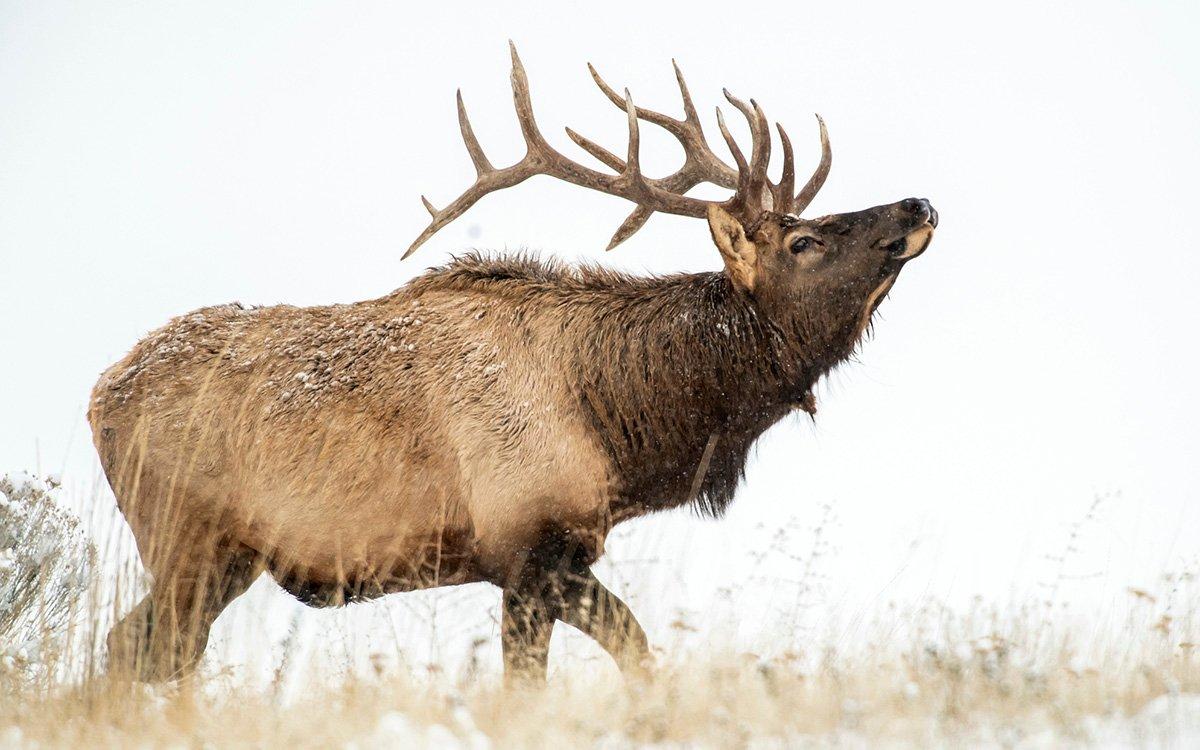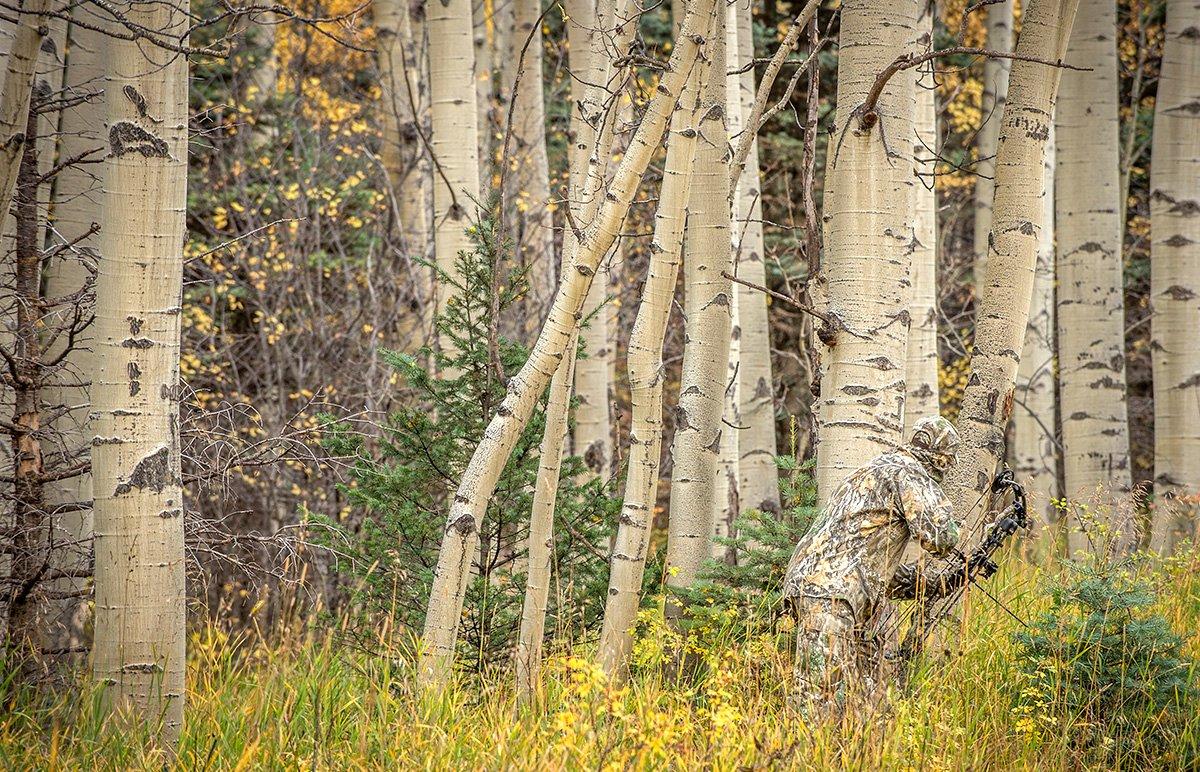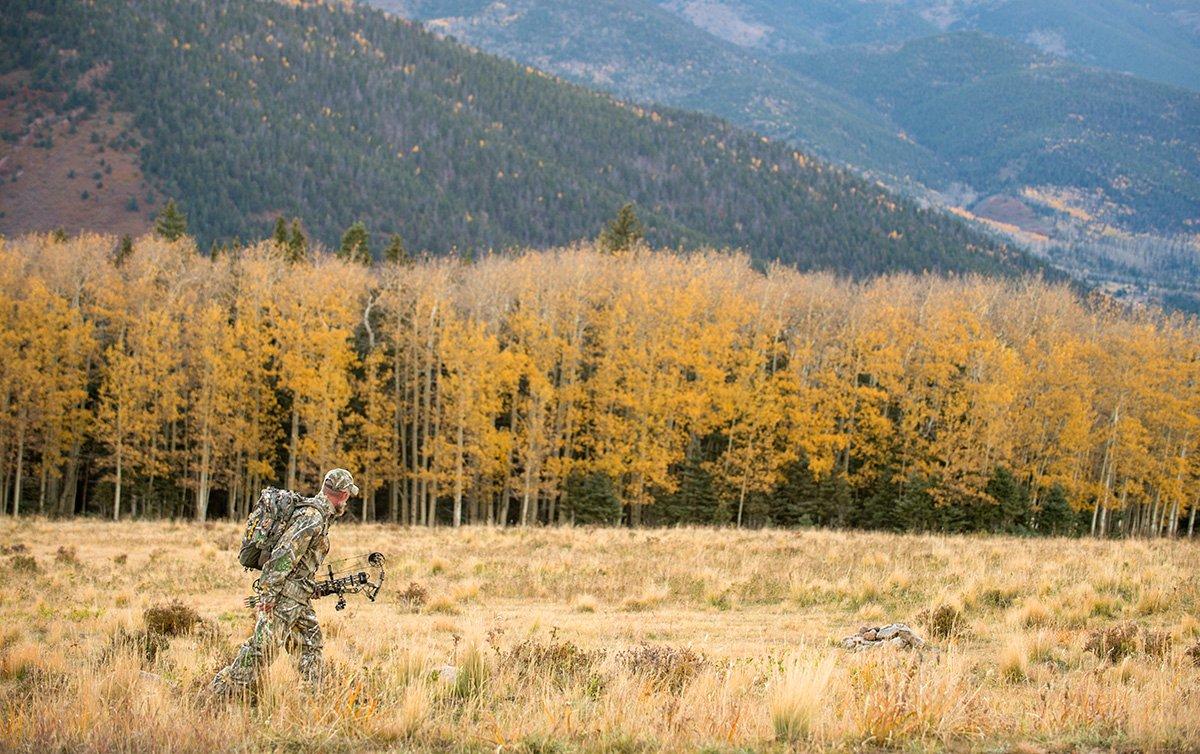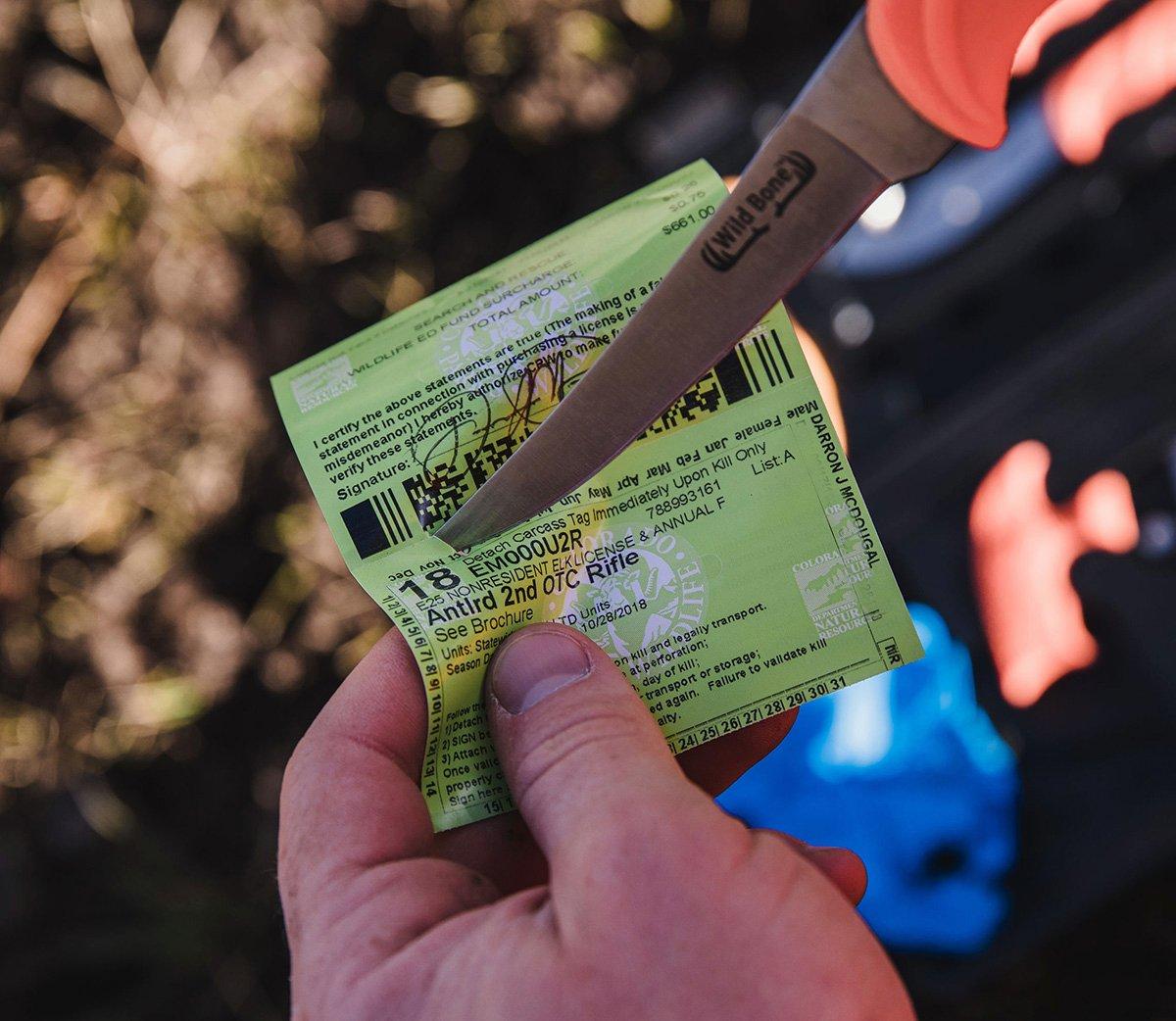The word is out! Here's your where-to guide for both dream tags and high-odds, over-the-counter elk hunts
There are promised lands in the elk world where a 300-class bull is just okay, compared to the mammoths roaming around. Multiple elk states have these hidden gems. The difficult part is drawing a tag. Each state handles things a bit differently, and wait times can be up to 20 years or longer for the most sought-after units. Many states employ a bonus- or preference-point system, while some have purely random draws.
If I lost you with that 20-year reference, don't sweat. You can hunt over-the-counter units in at least one state annually as you bank preference points for a future trophy hunt. To simplify your research, I've called the wildlife departments in 10 elk states and also spent many hours researching to unveil some of the West's best elk units. Let's dig in.
Oregon
If you want to be different from the majority of traveling elk hunters, try Oregon. The Beaver State offers fair OTC success rates, and its limited-entry hunts hold potential for trophy bulls.
Our best OTC bull tag, said Justin Dion, an assistant wildlife biologist with Oregon's Department of Fish and Wildlife, is the 1st Coast General Rifle [any legal weapon] Season. Note that our general season tags are valid in multiple units, and success rates vary by unit and weapon type.
The Scappoose Unit, Dion continued, is a strong contender. It had a 19% success rate in 2018. Several other general season units had 10 to 20% success rates across different seasons and weapon types. Most encompass terrain ranging from mountainous with extremely dense cover to lowland agricultural and semi-urban landscapes.
Access in the Scappoose Unit is challenging, Dion warned. Public-lands access is very limited — only 9% of the unit. While it has a high-for-OTC success rate, other wildlife management units in western Oregon have better access.
The current elk-population estimate in the Scappoose Unit is approximately 2,300 animals, Dion said. Estimates put bull-to-cow ratios at about 12 per 100.
For trophy bulls, Dion shared that the Wenaha Unit in northeast Oregon is most popular.
As of the 2019 controlled-hunt draw, resident bowhunters needed 20 points in order to draw the Wenaha Unit, and nonresidents needed even more, he said. Resident rifle hunters needed 18 points, and nonresidents, again, needed more. Preference-point reports are available to view online.
The current population estimate for Rocky Mountain elk in the Wenaha Unit is approximately 2,700 animals, Dion said. Our most recent estimates put bull-to-cow ratios at 10 per 100.
Although the Wenaha Unit takes many years to draw, hunters will be treated to abundant public lands. The unit, which is 70% public land, is dominated by the northern portion of the Umatilla National Forest, Dion noted. Here, hunters can anticipate mostly mountainous terrain and elevations ranging from 1,400 to 4,000 feet. The Wenaha is one of three of our known trophy elk areas (along with the Mt. Emily and Walla Walla Units). With a combination of national forest and wilderness lands, the Wenaha Unit has large tracts of grass-covered ridges and timber-filled canyons that support healthy elk herds.
Find more information here.
Wyoming
The Equality State has many incredible elk-hunting units, or areas, as the Wyoming Game and Fish Department refers to them. Some are easily drawn with just a few points, while others can take many years to pull. Area 100, in particular, is a gem that requires seniority in the draw, at least for nonresident hunters.
Just north of Rock Springs, Wyoming, Area 100 isn't your typical national forest elk habitat. Instead, expect sprawling sage flats, with a limited amount of juniper interspersed throughout the more broken terrain in the area's southernmost portion. Buttes and hills are common throughout. Some riparian habitat exists along the famed Green River corridor.
Access isn't an issue, with the area being approximately 71% public. There's one walk-in hunting parcel in the northern section, and the remainder of public access is on BLM lands. Currently, there's also one landowner enrolled in the Access Yes! program, which connects hunters with landowners.
Area 100 Type 1 tag holders racked up a stupendous 89.5% success rate in 2018. The area is also known for trophy bulls, largely a result of the drawing difficulty.
Sara DiRienzo, the Wyoming Game and Fish Department's public information officer, said, Area 100 is the most difficult unit to draw. For nonresidents, it requires 12 preference points for just a 15% chance of drawing. For residents, it's a random draw with only a 2% chance of drawing. These odds are for a Type 1 license, which allows you to hunt using any weapon. Archery hunters will need a special archery permit to accompany the license to hunt during the early archery season.
Hunters with an Area 100 elk tag will do well to focus on its central portion. Area 100 has a fairly extensive road system, and elk are said to generally use distance from roads rather than cover as security. The Bureau of Land Management has several Wilderness Study Areas within Area 100 worth concentrating on.
Area 100 Type 1 tag holders racked up a stupendous 89.5% success rate in 2018. The area is also known for trophy bulls, largely a result of the drawing difficulty.
If you can't justify the wait for an Area 100 elk tag, consider Area 122, which is located just north of Casper.
Nonresident hunters with just four preference points stand a 75% chance of drawing the tag, and hunters with five or more points went 100% in the draw, DiRienzo noted. It also had a high 2018 success rate of 79%. For residents, Area 122 is a random draw, and all first-choice applicants drew tags in 2018. These odds are for a Type 1 license, which you can hunt using any weapon. Again, early-season archery hunters will need a special archery permit to accompany the license.
Wyoming Game and Fish's website states, Elk occupy habitat throughout this hunt area, but they primarily utilize the Pine Ridge through the center. They may also move to draws, gently rolling sagebrush hills and sagebrush flats, as well as the sand hills.
Access in Area 122 is very challenging, especially when compared with Area 100. Only 26% of the area is accessible to the public. While that is still plenty of ground to roam, consider that some of the BLM chunks are landlocked by private lands. If you have the money, hunting the area with a reputable outfitter is your best bet.
Find more information here.
Washington
The Washington Department of Fish and Wildlife (WDFW) regulates elk hunting to maximize opportunity. Western Washington provides lots of OTC hunting for Roosevelt bull elk, but hunters looking to target a mature Rocky Mountain bull must enter the draw, with just one exception. OTC branch-antlered Rocky Mountain bull hunting is available in the Selkirk population of northeast Washington, but elk numbers there are lower. However, if a trophy bull is unimportant to you, there are many non-trophy OTC hunts available.
Rocky Mountain elk are predominantly found in eastern Washington, and OTC hunters are restricted to spike- and 'true' spike-only bull opportunity in units with high elk (and hunter) densities, said Kyle Garrison, elk specialist with the WDFW. Some antlerless opportunity is available depending on weapon type and season, primarily to address agricultural damage issues. Given spike-only regulations and varying success rates [the general metric for a 'good' OTC unit] among units, years and weapon types, it's difficult to assign the 'best' OTC Rocky Mountain elk unit.
Historically, Garrison continued, the Colockum and Yakima elk herds of District 8 have offered some of Washington's best OTC Rocky Mountain elk hunting. These herds occupy management units on the Cascade Range's eastern slope, offering good public-land access ranging from steep, timbered slopes to arid shrub-steppe. The Colockum and Yakima herds are both currently below population and calf/cow objectives, which is likely to impact harvest and subsequent success rates.
OTC hunters are encouraged to review WDFW hunting prospects and elk-harvest reports to select a unit that meets their desired criteria for total harvest, success rates and hunter numbers, Garrison said. Prospective hunters are encouraged to review WDFW's big-game-hunting pamphlet for specific season dates for their unit of interest.
If you're looking to bowhunt mature Rocky Mountain bulls in Washington, prepare to play the draw.
WDFW offers branch-antlered Rocky Mountain bull harvest in units with high elk densities through elk special permits, Garrison told me. Similar to OTC units, designating the 'best' bull elk unit is difficult and often defined by each specific hunter's interest. However, the Blue Mountains elk herd is known for producing some of Washington's largest bull elk — 400-plus inches — and is managed for a higher bull-to-cow ratio than other Washington elk herds. It comprises 13 game management units (GMUs). Most public-land opportunity is located in units 162, 166, 169, 172, and 175.
The Blue Mountains units, Garrison added, contain varied topography and public access, ranging from privately owned, agricultural-dominated landscapes to remote, rugged publicly owned forest and wilderness areas. The herd is also currently below population objective, but bull-to-cow ratios are within objective.
WDFW offers several special permits for the Blues by weapon type and season, Garrison said. But hunters must accrue many preference points — 10 to 15 — to have a realistic chance at drawing a quality bull tag there. Prospective hunters should also look into WDFW elk raffle-permit hunts as an additional opportunity to hunt branch-antlered bulls in the Blues. We encourage hunters to review WDFW's big-game-hunting pamphlet for a list of specific permit opportunities and their respective weapon types, dates and average number of points required for each hunt.
Find more information here.
Montana
Montana has long been a popular elk destination. The state has just 1.07 million residents, concentrated in population centers like Billings, Missoula and Great Falls. For that reason, rural Montana epitomizes what we all imagine when someone says, Old West.
In most of Montana's elk-hunting districts, hunters can harvest a bull with a general license, said Greg Lemon of Montana Fish, Wildlife and Parks. Many of these districts provide excellent access both with public lands and through our Block Management Program, which is a partnership we have with participating private landowners. Our OTC opportunities happen in all our available terrain — high country/alpine, sagebrush steppe, prairie flatland and badlands/breaks country.
Lemon said that bull-to-cow ratios vary in Montana's OTC hunting districts from lows of single-digit bulls to more than 20 for every 100 cows. Most general-license hunts provide good elk hunting, but the best can be had through drawing one of the Big Sky State's coveted elk licenses.
This is up for debate, but District 380 is one of our most prized permits, Lemon told me. This district has ample trophy-bull opportunities and an abundance of public lands. It can take up to 20 years to draw our difficult permits. It's a matter of luck. Annually, first-time applicants are drawing really tough permits.
In areas like District 380, anticipate private crop and range land in the lower elevations, then lodgepole and mixed conifer forests in the mid-to-high elevations, with alpine at the top, Lemon said. Elevations range from 3,500 to 9,000 feet.
The elk populations in District 380 are around 2,100, Lemon said. I don't have the bull-to-cow ratios, but they're higher in District 380 than in many other districts.
Click here for more information.
Arizona
Many folks assume that Arizona's elk licenses are issued by draw only. In truth, it does offer OTC elk hunts, but these don't nearly equal the quality you can expect from the draw hunts.
All OTC elk-hunt areas have very low success rates, said Amber Munig, the Arizona Game and Fish Department's big-game-management-program supervisor. These are areas where elk haven't traditionally occurred, and we don't want elk expanding into them. Elk move in and out of these areas, so we have no data on bull-to-cow ratios, and I can't name a specific OTC elk hunt in Arizona as the best.
Munig says that terrain in the OTC units is lower in elevation with a low density of pinyon-juniper, some grasslands and tamarisk-encroached river bottoms. Some of the OTC units are open year-round, although it's important to note that the definition of a legal elk changes. Public access also tends to be limited.
Of course, Arizona is known as a big-bull state with world-class potential.
We manage four units — 1, 9, 10 and 23 — for older age-class bulls, higher success rates and low hunter density, Munig said. We manage for a ratio of 40 bulls for every 100 cows. Each unit has varying draw odds. Our draw operates on a bonus-point system where every bonus point gives the hunter an extra chance at a low random number in the draw. The lower the random number, the better your draw position. Every year, we have hunters from max points to first-time applications drawing bull-elk permits. In our draw, 20% of the permits are issued on a preference-point system where hunters with maximum bonus points are considered first.
Here is a rough breakdown of drawing odds for the 20% of licenses issued through the preference-point draw, Munig continued. For units 1, 9, 10 and 23, it takes 22 to 27 bonus points for general early bull, 19 to 25 bonus points for muzzleloader early bull, and 15 to 22 bonus points for early archery bull.
Terrain in the trophy-managed units is higher in elevation and typically mountainous with deep canyons. Expect pinyon-juniper and mixed conifers.
Public lands are abundant, with exception of Unit 10, which is dominated by private lands, Munig shared. However, the Arizona Game and Fish Department has entered into a Landowner Compact Agreement with the Boquillas-Diamond A Ranch, which encompasses Unit 10's western half, amounting to about 720,000 acres. This hunt may have restricted access. Applicants should secure access before applying.
Click here for more information.
Nevada
Nevada grows big bulls because it doesn't offer nonresidents OTC bull tags. Some of the best trophy potential lies in White Pine County. More specifically, Units 111 to 115 are historically top producers.
White Pine County is in the top three counties for Boone and Crockett record-book submissions, said Ashley Sanchez of Nevada's Department of Wildlife. Bulls are big, numerous and generally very accessible.
Nevada is over 80% public lands, Sanchez explained. Nearly all the opportunities occur on public.
Resident hunters commonly draw this tag in five to 10 years, and nonresidents can generally expect to wait 10 years or more, Sanchez continued. The Nevada draw isn't a preference-point system. A bonus point is awarded for each unsuccessful application, which improves draw odds in subsequent years. But an applicant with zero or very few bonus points still has a chance to draw a tag. Every year, folks who fall into this category draw our most coveted tags.
Sanchez said that Nevada's elk habitat is mostly constricted to rolling features of high-elevation mountain ranges, much of which can be glassed from valleys or mountain bases.
Seasons vary depending on hunt area but are generally mid-August to mid-September for archery, October for muzzleloader, and late October to November for rifle, Sanchez noted.
Currently, most populations are at or below population objectives, she continued. But post-hunt bull ratios are some of the highest in the West. The average 2018 to 2019 post-hunt bull ratio was 41 to 100 cows — but ranged from 11 to 104.
Nevada elk hunters typically have no trouble finding land to hunt when they draw a coveted tag. Nevada is over 80% public lands, Sanchez explained. Nearly all the opportunities occur on public.
Find more information here.
Utah
It's no secret that the Beehive State ranks high for trophy potential. One reason? Utah doesn't manage elk herds on bull-to-cow ratios, said Covy Jones, big-game coordinator for the Utah Division of Wildlife Resources. We manage on age objective.
Naturally, older bulls in a state with screamer genetics will sport impressive antlers.
Hunting opportunities are afforded via general-season and limited-entry licenses. Rifle and muzzleloader general licenses are available on a first-come-first-served basis, while the general-season archery licenses are unlimited. In numerous hunting units, legal elk for the general-season hunts are spike only, but there are some units where any bull is legal. According to Utah's Statewide Elk Management Plan, most of the any-bull units are dominated by private lands, with limited public access.
If you just want to kill a general-season elk, the spike-only Wasatch Mountains and Central Mountains units can be very good, with access via the Uinta National Forest and Manti-La Sal National Forest. For a general-season unit that allows any-bull harvest, consider the Pine Valley unit in southwest Utah. Here, you'll find the Dixie National Forest and a plethora of BLM lands, but elk numbers tend to be lower.
If it's a trophy-class bull you're after, it's tough to beat the San Juan unit. For nonresident archers, there are only two bull permits available. Two any-legal-weapon hunts also have two nonresident permits each. The muzzleloader season has one permit available to out-of-staters. To put things into perspective, 2018 nonresident applicants who applied for the archery hunt stood a 1-in-367 chance of drawing. But lucky recipients are treated to the rare opportunity to hunt 380- to 400-plus-inch bulls, because the unit produces them annually. Success rates for the archery hunt are just above 30%.
Public hunting opportunities dominate the San Juan unit via BLM and state lands, as well as the La Sal National Forest. As for where to focus and terrain to expect, below are some biologist notes pulled from the Utah Division of Wildlife Resources website.
Abajo Mountain: Higher elevations include large alpine meadows with aspen/conifer stands surrounding, lower elevations contain oak stands with large sagebrush clearings, good camping, nice roads, holds a good number of elk.
North Elk Ridge: A good area for elk, timbered North slopes, aspen stands, limited clearings for glassing, camping, nice roads, several different draws, canyons and mesa tops to hunt.
South Elk Ridge: Good roads on mesa tops, limited access to rugged canyons, great area for pack-in hunts (Dark Canyon).
Click here for more information.
Idaho
Idaho is an opportunistic elk state. It offers OTC elk licenses across many units. Some OTC units have license quotas available on a first-come-first-served basis starting December 1.
Daryl Meints of the Idaho Department of Fish and Game said, We don't 'hot spot' hunting opportunities in Idaho because we still offer general OTC, unlimited hunting opportunities. But we also offer numerous quality controlled-hunt opportunities across the state.
Of course, some OTC units have higher success rates than others. Focus on those with success rates of up to and over 20%. Obviously, these have little to do with bull quality, but the Idaho Department of Fish and Game website includes harvest statistics that denote how many bulls with 6 points or more per side were taken in each unit.
While Idaho's OTC elk hunts can be productive, its controlled hunts put you into the state's best elk hunting. One unit worth considering is the Owyhee Unit. It covers GMUs 38, 40, 41 and 42. Here, elevations range from 2,200 to 9,200 feet. Draw odds for the GMU 42 any-weapon antlered-elk licenses are about 4%.
GMU 42 abounds with public-land opportunities. It's composed of an astounding 92.3% BLM lands, with only 4.27% privately owned and the remainder state owned. Trophy potential is great. Of the 13 nonresident hunters carrying GMU 42 licenses in 2018, eight were successful, accounting for a 63% success rate. All eight bulls harvested had 6 points or more per side.
Interestingly, Idaho doesn't fuss with any sort of point system for its controlled hunts. We do not offer bonus or preference points, Meints said. Each hunter has an equal opportunity to draw a controlled hunt. Each individual has different expectations or values as to what they're looking for in a hunt, so we direct them to our website and the Hunt Planner. Once hunters narrow down their choices and have additional questions, we'll happily assist and provide advice.
Click here for more information.
Colorado
The Centennial State has more than 100 OTC GMUs available for nonresident hunters, and selecting the best from that lengthy list would be difficult. If elk numbers and a high success rate interest you, GMU 4, which encompasses parts of Moffat and Routt Counties, is a worthwhile contender. It's located north of Craig, Colorado, which is said to be the world's elk capital.
In 2018, 5,079 hunters went afield in GMU 4, taking a total estimated harvest of 1,434 elk. Broken down, this consisted of 736 bulls, 641 cows and 57 calves. This equates to a 28% success rate. GMU 4 and the surrounding units average 16 bulls for every 100 cows.
Access isn't a problem in GMU 4, via the expansive Routt National Forest, two state parcels and plots of BLM lands. Most elk can be found in the Routt, which occurs in the unit's eastern portion. While the unit doesn't have any OTC archery-bull licenses, it has OTC second- and third-season rifle hunts. Pressure can be intense during all OTC Colorado elk hunts, so be prepared to hike deep into roadless areas to find secluded pockets of elk. Also, be prepared to take any legal bull since this isn't a trophy hunt.
To increase your odds for a trophy, start banking up preference points. The state's northwest corner has long been a storied trophy area that encompasses GMUs 1, 2 and 201. The catch is that the minimum number of preference points for nonresidents in 2017 for GMU 201 was 26 for archery, muzzleloader and first-season rifle. GMU 2 has similar standards.
Should you build enough points to draw GMU 201, 300-plus-inch bulls are very common, with some measuring much, much larger. Bull-to-cow ratios in the vicinity average 22 per 100. Public lands make up more than 90% of the unit.
Habitat consists of sage and sage-grassland, pinyon-juniper, creek-cut canyons and semiarid plateaus. Elevations vary from 5,100 to 9,559 feet. Elk are found throughout the unit. Since hunting pressure is very regulated, a pre-hunt scouting trip can be productive and a great way to locate bulls to hunt.
Click here for more information.
New Mexico
The Land of Enchantment is an elk hotbed, and it's because New Mexico doesn't have OTC tags. Limited hunting pressure, good genetics and solid herd management all amount to some of the West's finest wapiti hunting.
GMU 36 annually has one of the highest success rates, said James Pitman, assistant chief of information with New Mexico's Department of Game and Fish. The exact unit with the highest success rate fluctuates from year to year. In the Primary Management Zone, units with greater than a 50% success rate in 2018 were GMUs 4, 5A, 21B and 36.
Habitat in GMU 36 ranges from Chihuahuan Desert to pinyon-juniper woodlands to ponderosa forests and subalpine spruce forests in the higher elevations, he continued. Terrain varies in these different habitat types from rocky desert to steep, rugged mountains. GMU 36 makes up the Ruidoso herd, which has a population estimate of 3,300 to 6,600 elk and a bull-to-cow ratio of 71 per 100.
Public lands in GMU 36 include portions of the Lincoln National Forest and various BLM and state lands.
Specific hunts, rather than units, are toughest to draw, Pitman explained. These are called 'high-demand' hunts, which are calculated annually and have at least 22% nonresident applicants. For the 2018 season, high-demand elk hunts were found in units 6A-C, 12, 13, 15, 16A-E, 17, 21A, 23, 28, 34, 36, 45, 51, 52, 53, 55A and 56. That being said, GMU 16, which is divided into subunits A-E, has more high-demand hunts than most other units.
New Mexico utilizes a straight random-draw system, Pitman said. There aren't preference points. In accordance with state law, the draw attempts to distribute a minimum of 84% of the licenses for each hunt to New Mexico residents, 10% to residents or nonresidents who've contracted with an outfitter, and 6% to nonresidents who haven't contracted with an outfitter.
GMU 16 A-E covers a large area of southwest New Mexico, he added. Habitat types range from semidesert lowlands to pinyon-juniper woodlands to ponderosa forests and spruce-fir forests at the higher elevations. Terrains range from steep, rugged mountains with deep canyons to rolling grasslands and semidesert. GMU 16 A-E is part of the Greater Gila herd, along with GMU 15. The Greater Gila herd has a population estimate of 21,000 to 23,000 elk, and a 34-to-100 bull-to-cow ratio.
Public lands in GMU 16 A-E include the Gila National Forest and various BLM and state lands.
Find out more information here.











